This presentation was originally given at the EDST 2023 Research Day.
EDST students and faculty are invited to share their own reflections, presentations, or memories from Research Day (see below for further details).
How to Write Research Differently: Examples from a Comic Poetic Inquiry
A Research Day Workshop by Gabriella Maestrini
Location and Length: The Multipurpose room was configured with tables so that everyone could sit around and face each other. The group of 10 was split into two groups of 5. The activity lasted about 1 hour.
The idea for the workshop on research day came from how I had approached writing my dissertation on humor in life, disaster, and pedagogy. In writing this dissertation I wanted the content reflected in the form which brought me to write in a rather fragmented comic poetic form with cartoons, poetry, reflections, stories, conversations, and analysis.
Taking a comic worldview approach, researching humor needed to be reflected in the voices that I created throughout the dissertation. I provided an example of how I had written a short piece on copyright acknowledgement in the dissertation where I demonstrated that it is possible to step outside of the conventional approaches to writing while maintaining academic rigor.
This comic poetic approach combined with the many voices, was then the basis for this workshop. Academically I drew on Faulkner, Ulysse, Richardson and Prendergast for my theoretical frames, which I briefly introduced through PowerPoint slides. Creating found poetry or stories can come from observations, field notes, interviews, photographs, doodles, books, and articles.
It is paying attention to the unexpected twists and turns in stories and the multiple voices that became the idea of a multitude of comic and poetic voices that I wanted to have the participants of the workshop experience. This led me to create an experimental and collaborative approach. Here is the slide with the workshop instructions:
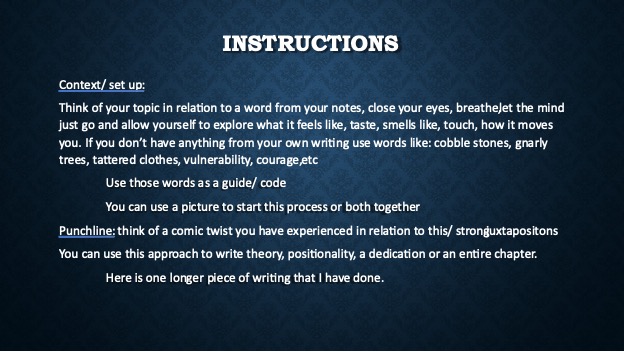
There were ten people in the workshop that were divided into two groups each armed with flipchart paper, markers, and seated around tables. The instructions were to think of multiple voices while each participant was to write down words randomly on the paper. Above you can see the possible prompts.
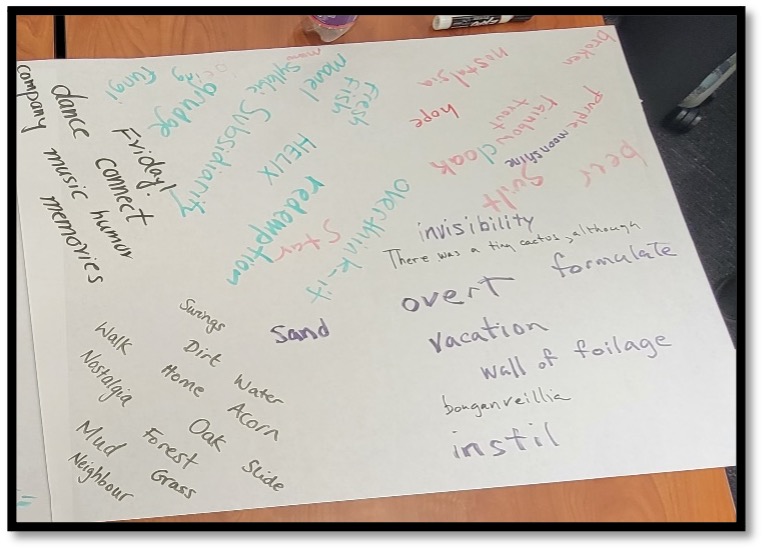
After about ten minutes, I asked them to start thinking of patterns within the words, and how they could set up an opening line to their piece. Starting from there, the two groups diverged in their outcomes. The first one setting it up as a concise poem that started out with the one word that had coincidentally appeared twice on the page ‘nostalgia’:
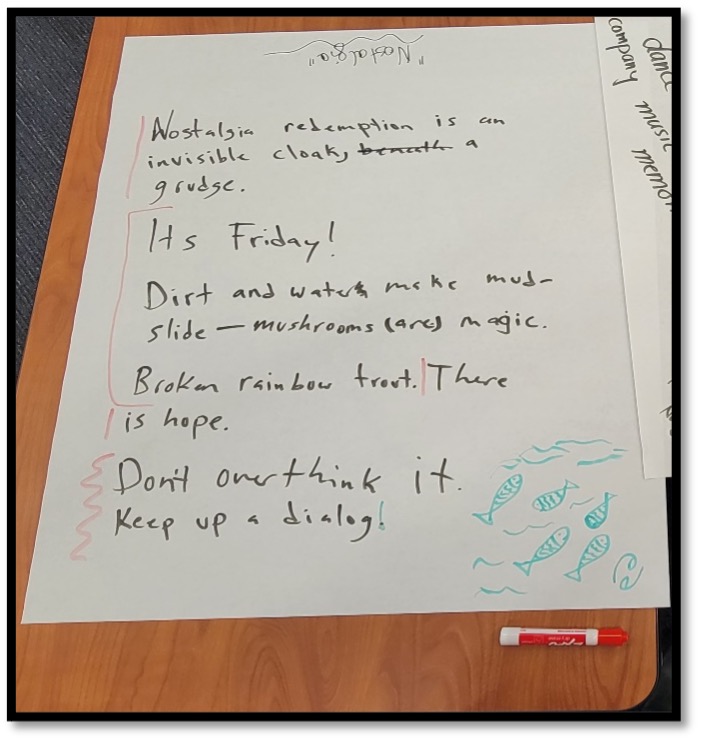
While the second group wrote an opening line to a story where the participants tried to incorporate as many words as they could from their page. On a second piece of flipchart paper, the creative expressions took shape.
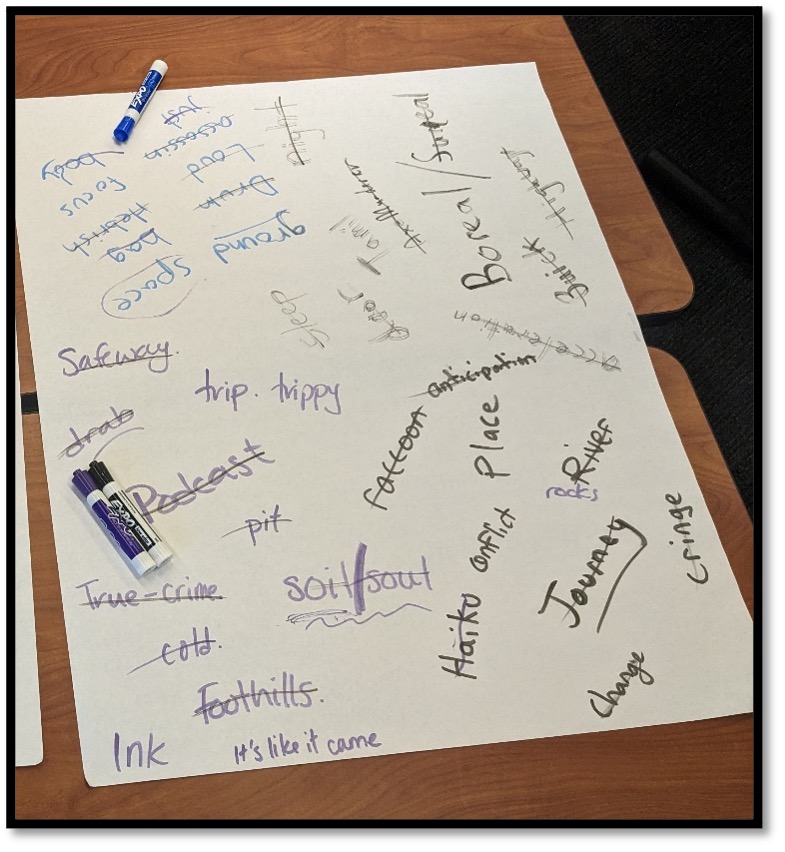
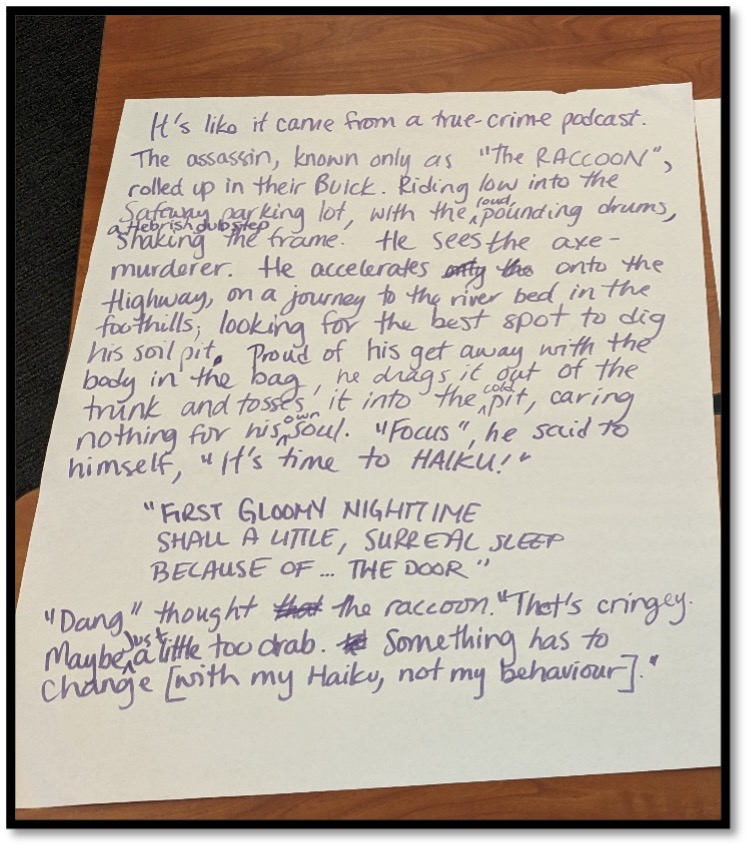
At times, I guided asking questions about whose voice they wanted to show, where they wanted their story to go and how they could use the context (the main story) to set up an unexpected comic ‘punchline’. The above pictures show the process and the results.
The two groups came to very different results: one was more poetic in nature, the other more narrative. What both had in common was that everyone had a great time doing the exercise, letting the creative juices flow and not editing or censoring the process. Laughter was a common occurrence.
In the debriefing, after sharing the results with the others reading them out loud, we spoke about the workshop experience. The most common comment was that although they initially did not know where the random words would lead them, the participants were surprised that cohesive stories emerged. Some were going to use this brainstorming/writing approach in their classes or use it in their own dissertation writing as a creative outlet.
EDST students, faculty, and staff are warmly invited to share reflections, photos, and other memories from Research Day 2023. Reflections may take on the form of short narratives (such as this one on CSSE 2021 from EDST’s Yotam Ronen), summations of panel sessions, or other takeaways from the conference day.
Present a paper, poster, performance, roundtable, or other type of presentation?
Consider making your presentation into a blog post like this one! Posts typically are 500-1,000 words long and may include links, images, links, audio, video, and other forms of multimedia.
Have a question about submissions? Photos to share from Research Day? Send an email to blog editor (Jessica Lussier) at edstblog.editor@ubc.ca.
You can check out the blog’s full call for papers here.
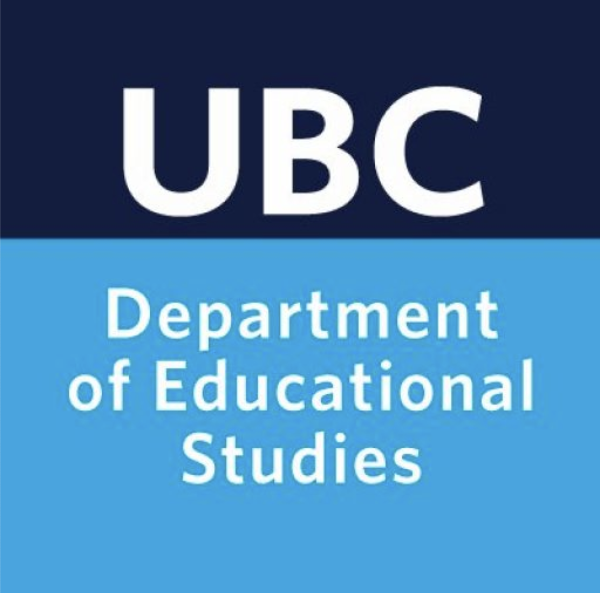


Leave a Reply